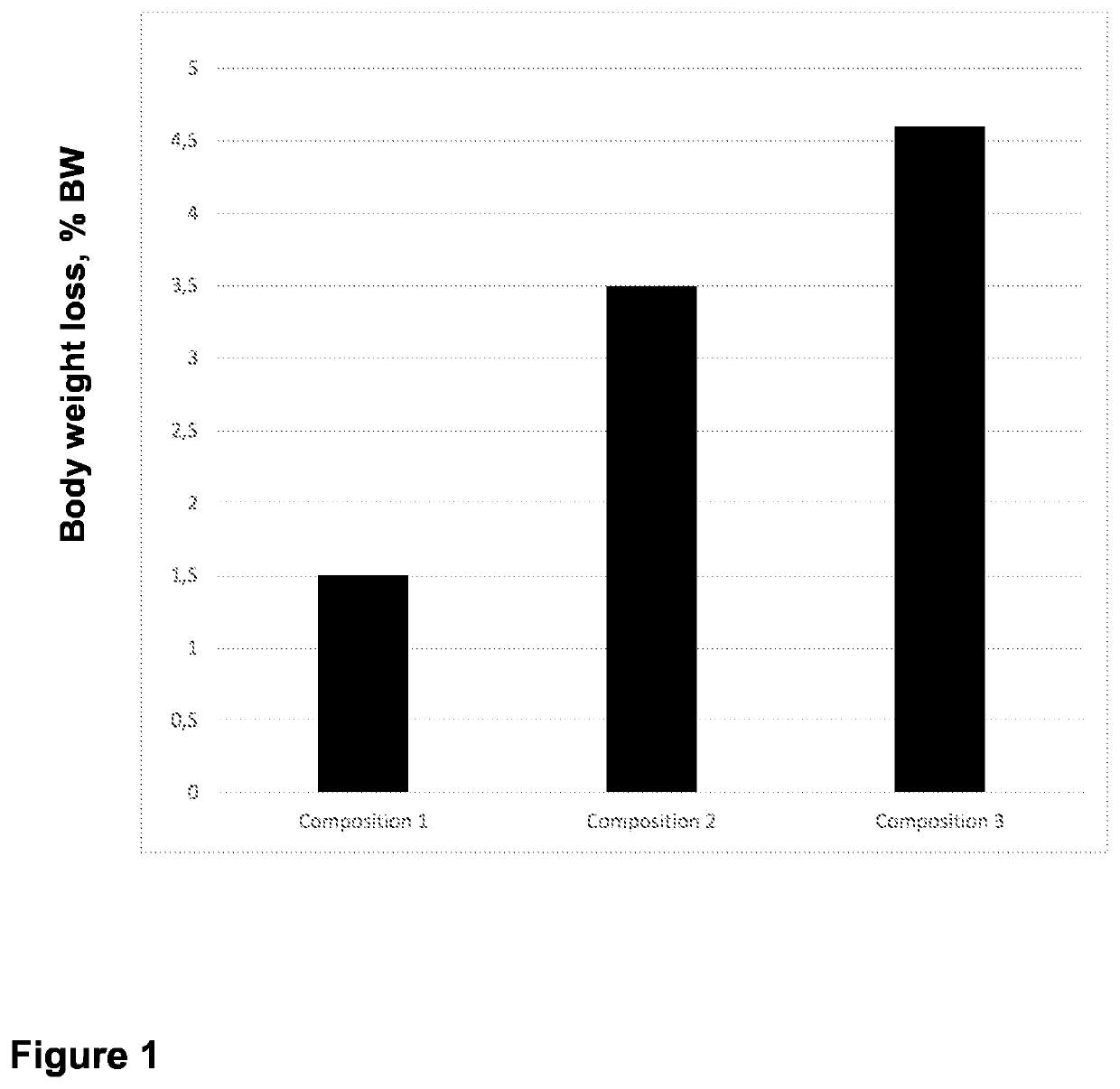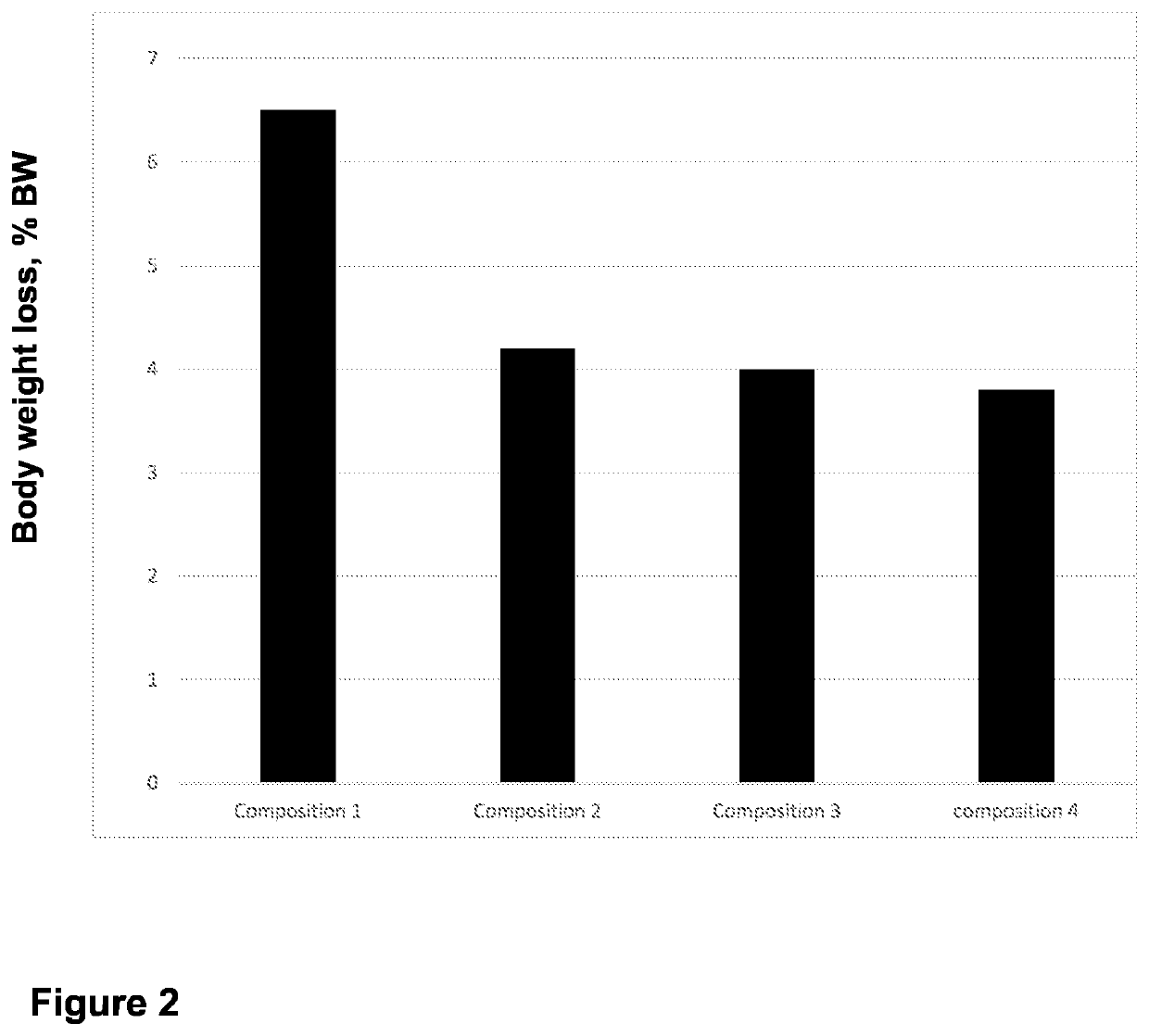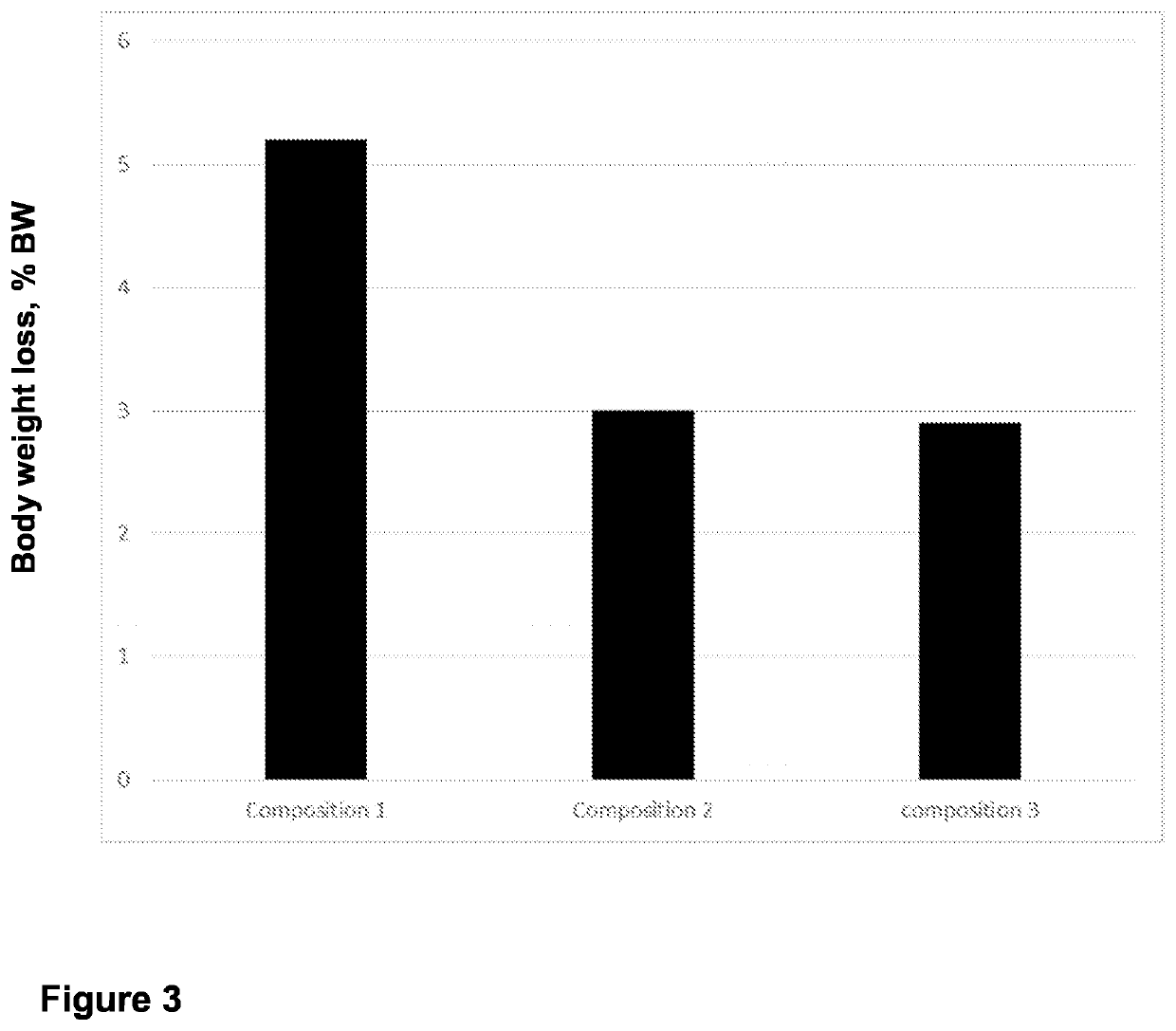Aqueous composition for livestock animals
- Summary
- Abstract
- Description
- Claims
- Application Information
AI Technical Summary
Benefits of technology
Problems solved by technology
Method used
Image
Examples
experiment 1
ueous Compositions with Varying Potassium to Sodium Ratio on Live Body Weight Loss in Holstein Bulls Subjected to a 24-Hour Feed Deprivation Period
Goal
[0153]The goal of this experiment was to assess the effects of varying potassium to sodium ratios on live body weight loss in Holstein bulls subjected to a 24-hour feed deprivation period.
Method
[0154]Holstein bulls (n=24), aged 7 months were subjected to a 24-hour feed deprivation period. During the feed deprivation period, the bulls were individually housed in pens measuring 2.5 m×3.5 m. The bulls were individually weighted twice: 1) one hour prior the onset of the feed deprivation period and 2) at the end of the feed deprivation period (i.e., at 24 hours after onset). The percentage of body weight loss in response to 24-hour feed deprivation period (% BW) for each individual bull was calculated as follows:
[(Body weight at onset of feed deprivation−Body weight at the end of feed deprivation) / Body weight at onset of feed deprivation]×...
experiment 2
queous Compositions with Varying Total Electrolyte Osmolarity on the Live Body Weight of Holstein Bulls Subjected to a 48-Hour Feed Deprivation Period
Goal
[0159]The goal of this experiment was to assess the effects of aqueous compositions having a potassium to sodium ratio greater than one and varying total electrolyte osmolarity on live body weight loss in Holstein bulls subjected to a 48-hour feed deprivation period.
Method
[0160]Holstein bulls (n=24), aged 7 months were subjected to a 48-hour feed deprivation period. During the feed deprivation period, the bulls were in individually housed in pens measuring 2.5 m×3.5 m. The bulls were individually weighted twice: 1) one hour prior the onset of the feed deprivation period and 2) at the end of the feed deprivation period (i.e., at 48 hours after onset). The percentage of body weight loss in response to 48-hour feed deprivation period (% BW) for each individual bull was calculated as in experiment 1.
Experimental Groups
[0161]The bulls w...
experiment 3
ueous Compositions with Varying Glycerol Levels (%) on the Live Body Weight Loss in Holstein Bulls Subjected to a 48-Hour Feed Deprivation Period
Goal
[0165]The goal of this experiment was to assess whether varying the amount of glycerol in the compositions according to this disclosure (i.e., having a potassium to sodium molar ratio greater than one) influenced the effect of the composition as taught herein on live body weight loss in Holstein bulls subjected to a 48-hour feed deprivation period.
Method
[0166]The bulls were subjected to the same experimental conditions as in experiment 2 above. The percentage of body weight loss in response to 48-hour feed deprivation period (% BW) for each individual bull was calculated as in experiment 1.
Experimental Groups
[0167]The bulls were divided into three experimental groups as set out in Table 9 below:
TABLE 9Experimental groupsExperimentalK:NaosmolarityGlycerolgroupsratio(mosm / L)(% Vol)1.Composition 175:252000.02.Composition 275:252002.03.Comp...
PUM
| Property | Measurement | Unit |
|---|---|---|
| Time | aaaaa | aaaaa |
| Time | aaaaa | aaaaa |
| Fraction | aaaaa | aaaaa |
Abstract
Description
Claims
Application Information
 Login to View More
Login to View More - R&D
- Intellectual Property
- Life Sciences
- Materials
- Tech Scout
- Unparalleled Data Quality
- Higher Quality Content
- 60% Fewer Hallucinations
Browse by: Latest US Patents, China's latest patents, Technical Efficacy Thesaurus, Application Domain, Technology Topic, Popular Technical Reports.
© 2025 PatSnap. All rights reserved.Legal|Privacy policy|Modern Slavery Act Transparency Statement|Sitemap|About US| Contact US: help@patsnap.com



